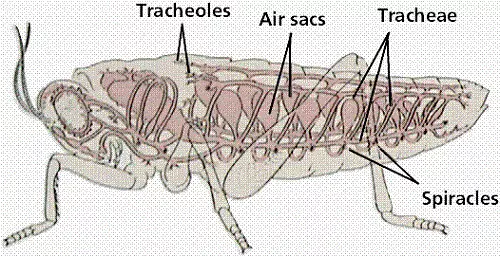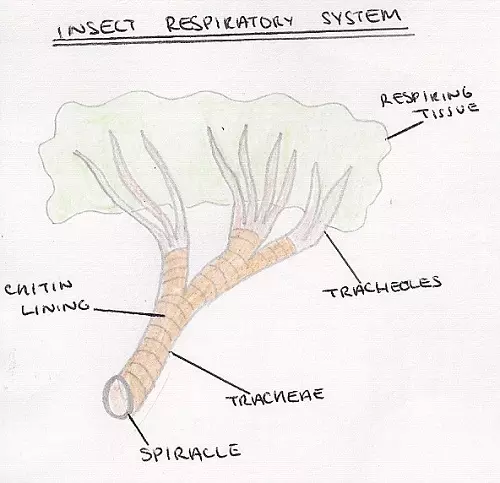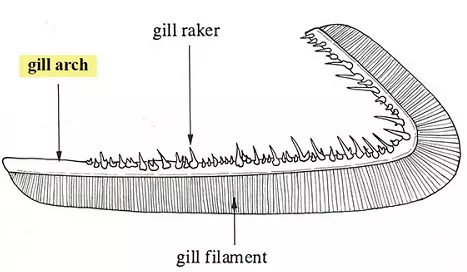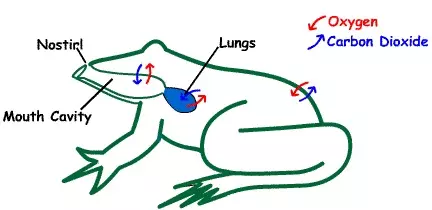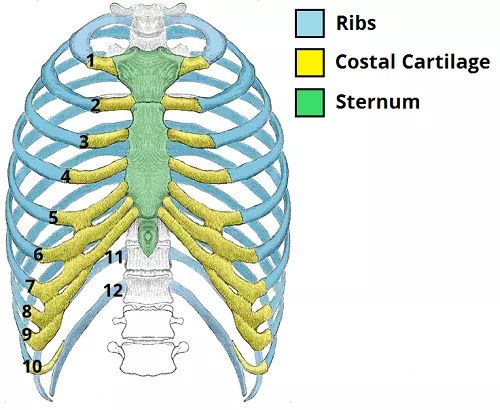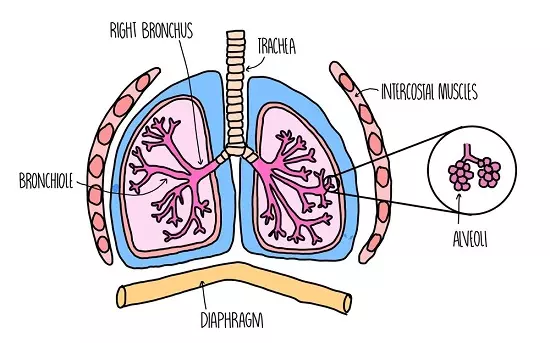Last Updated: 31-12-2021 | Esoma-KE
Gaseous Exchange in Animals
- All animals take in oxygen for oxidation of organic compounds to provide energy for cellular activities.
- The carbon (IV) oxide produced as a by-product is harmful to cells and has to be constantly removed from the body.
- Most animals have structures that are adapted for taking in oxygen and for removal of carbon (IV) oxide from the body.
- These are called respiratory organs.
- The process of taking in oxygen into the body and carbon (IV) oxide out of the body is called breathing or ventilation.
- Gaseous exchange involves passage of oxygen and carbon (IV) oxide through a respiratory surface by diffusion.
- The type depends mainly on the habitat of the animal, size, shape and whether body form is complex or simple.
- Cell Membrane: In unicellular organisms the cell membrane serves as a respiratory surface.
- Gills: Some aquatic animals have gills which may be external as in the tadpole or internal as in bony fish e.g. tilapia.
- They are adapted for gaseous exchange in water.
- Skin: Animals such as earthworm and tapeworm use the skin or body surface for gaseous exchange.
- The skin of the frog is adapted for gaseous exchange both in water and on land.
- The frog also uses epithelium lining of the mouth or buccal cavity for gaseous exchange.
- Lungs: Mammals, birds and reptiles have lungs which are adapted for gaseous exchange.
- They have a large surface area in order to increase diffusion.
- They are usually thin in order to reduce the distance of diffusion.
- They are moist to allow gases to dissolve.
- They are well-supplied with blood to transport gases and maintain a concentration gradient.
- The carbon (IV) oxide produced as a by-product is harmful to cells and has to be constantly removed from the body.
- Most animals have structures that are adapted for taking in oxygen and for removal of carbon (IV) oxide from the body.
- These are called respiratory organs.
- The process of taking in oxygen into the body and carbon (IV) oxide out of the body is called breathing or ventilation.
- Gaseous exchange involves passage of oxygen and carbon (IV) oxide through a respiratory surface by diffusion.
Types and Characteristics of Respiratory surfaces
- Different animals have different respiratory surfaces.- The type depends mainly on the habitat of the animal, size, shape and whether body form is complex or simple.
- Cell Membrane: In unicellular organisms the cell membrane serves as a respiratory surface.
- Gills: Some aquatic animals have gills which may be external as in the tadpole or internal as in bony fish e.g. tilapia.
- They are adapted for gaseous exchange in water.
- Skin: Animals such as earthworm and tapeworm use the skin or body surface for gaseous exchange.
- The skin of the frog is adapted for gaseous exchange both in water and on land.
- The frog also uses epithelium lining of the mouth or buccal cavity for gaseous exchange.
- Lungs: Mammals, birds and reptiles have lungs which are adapted for gaseous exchange.
Characteristics of Respiratory Surfaces
- They are permeable to allow entry of gases.- They have a large surface area in order to increase diffusion.
- They are usually thin in order to reduce the distance of diffusion.
- They are moist to allow gases to dissolve.
- They are well-supplied with blood to transport gases and maintain a concentration gradient.





